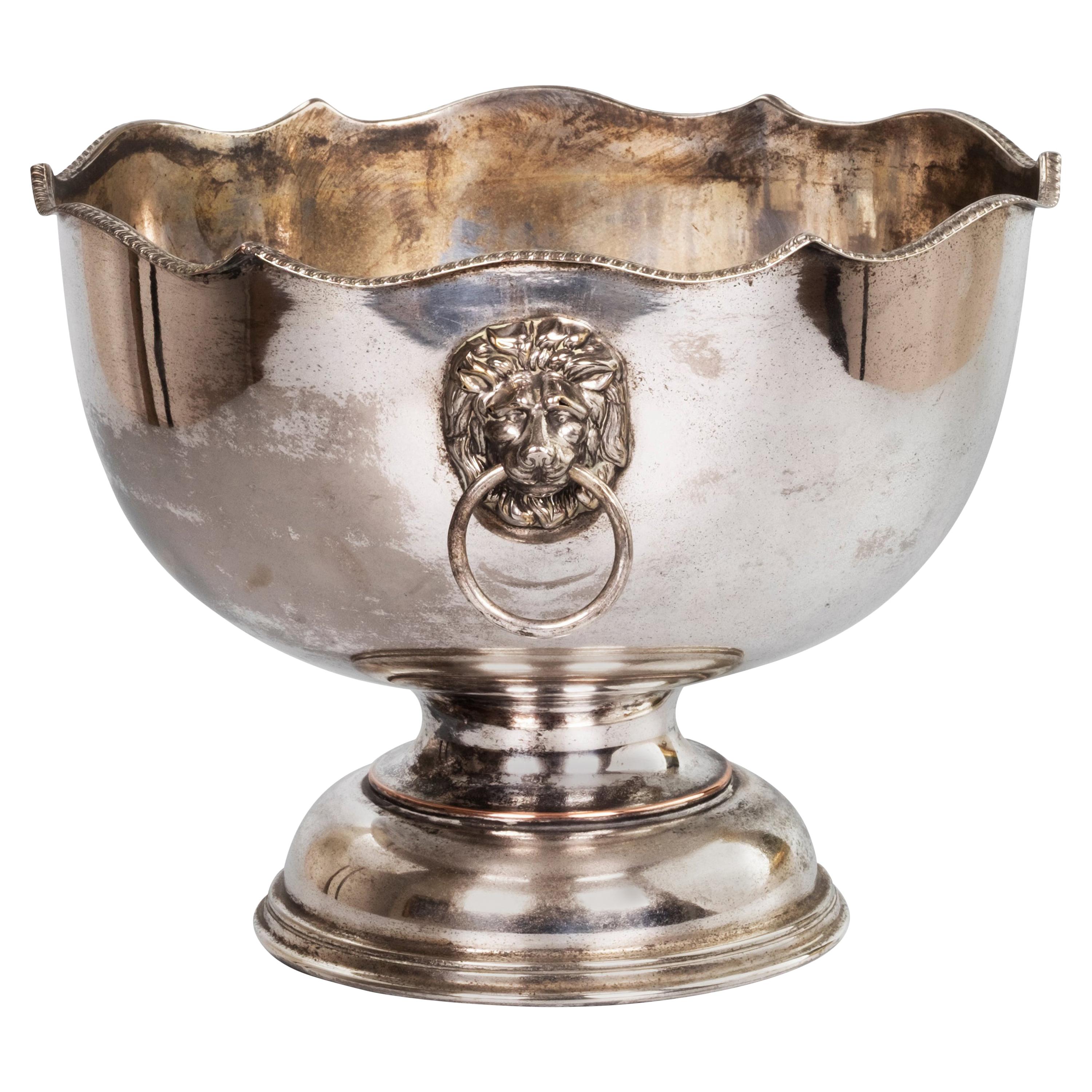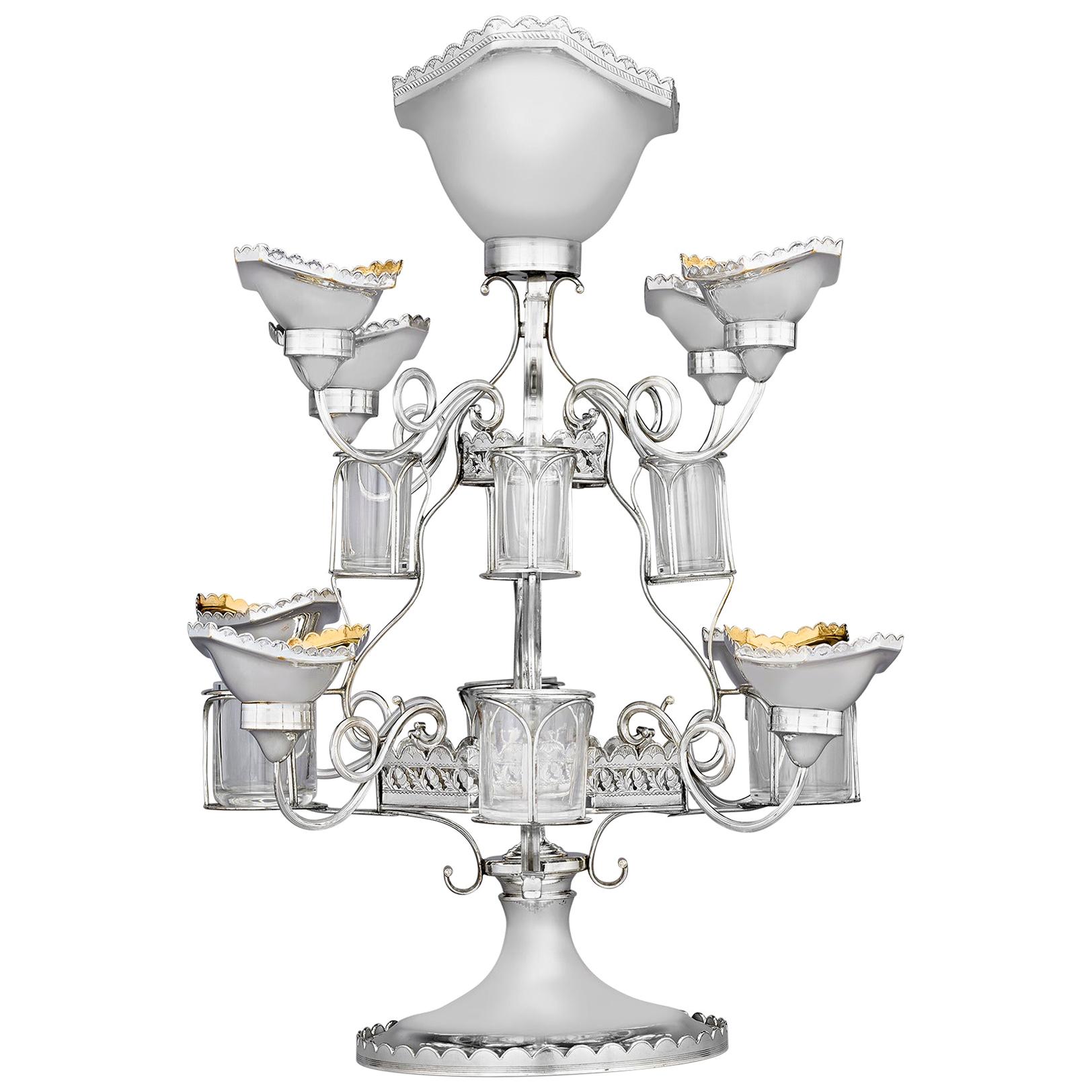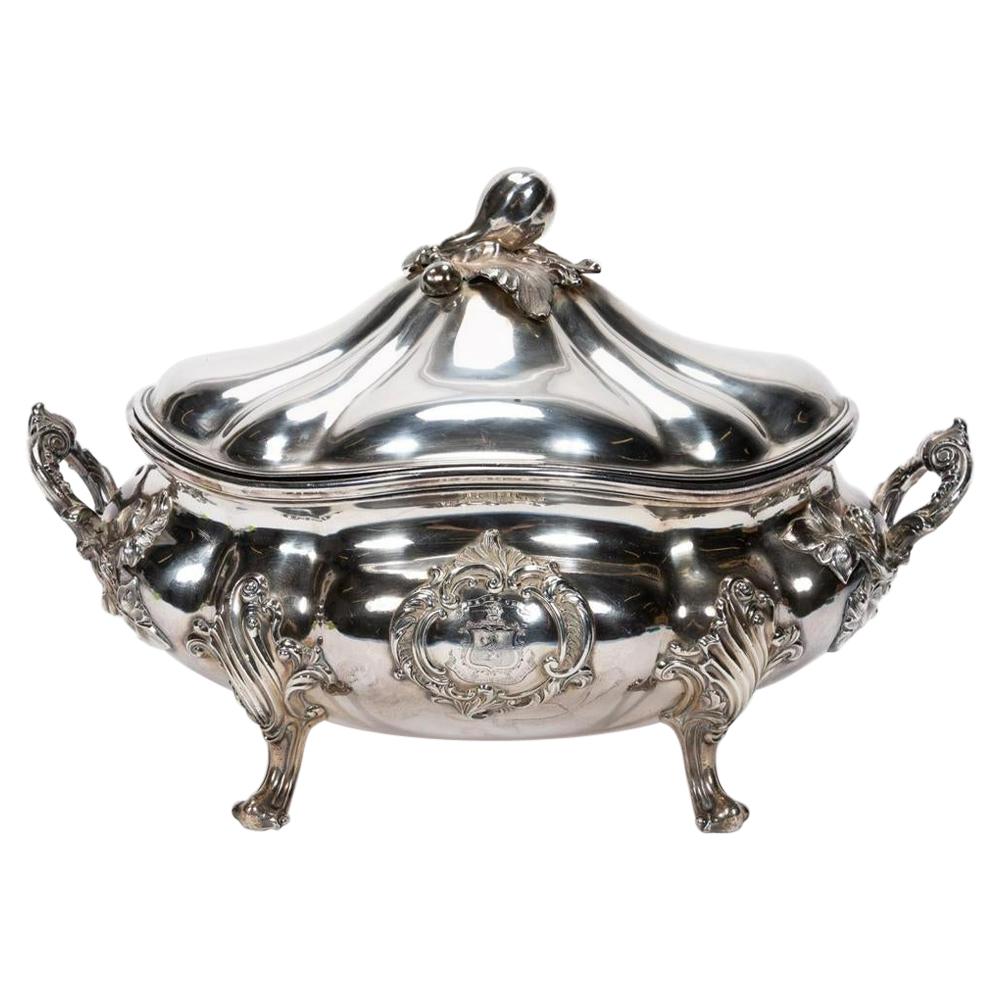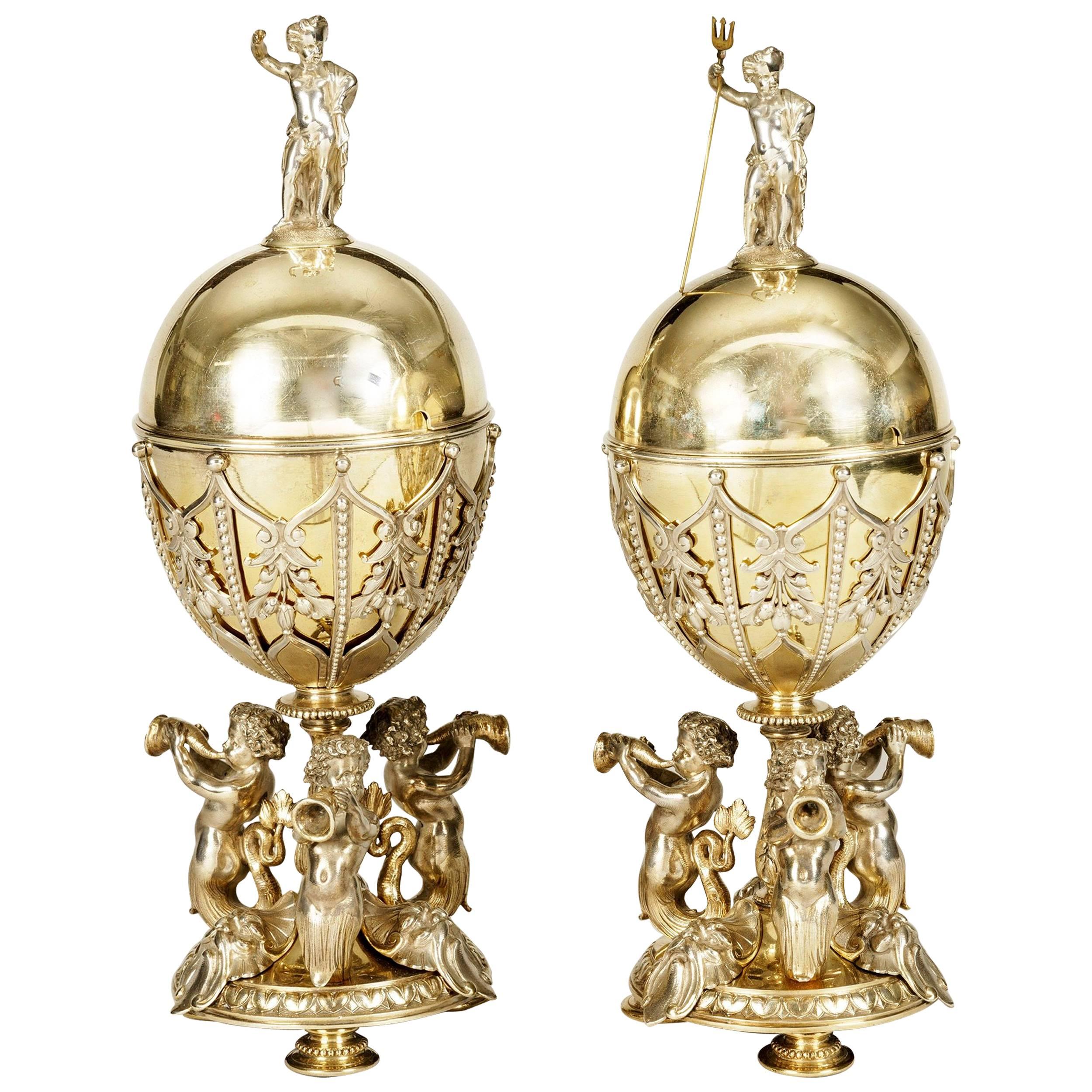Items Similar to Sheffield, England, 20th Century Silver Plated, Hallmarked
Want more images or videos?
Request additional images or videos from the seller
1 of 8
Sheffield, England, 20th Century Silver Plated, Hallmarked
About the Item
A Sheffield made mid-20th century silver plated punch bowl with lion heads serving as handles.
The silver plate on a copper base.
Hallmarked on the bottom of the base for “Silver on Copper”, Sheffield.
This punch bowl makes a very attractive fruit bowl or champagne bucket. Very good condition.
Shipping included
Free and fast delivery door to door by air
Original art work(s) from Europe.
About the Seller
5.0
Vetted Seller
These experienced sellers undergo a comprehensive evaluation by our team of in-house experts.
1stDibs seller since 2018
14 sales on 1stDibs
- ShippingRetrieving quote...Ships From: Lantau, Hong Kong
- Return PolicyA return for this item may be initiated within 7 days of delivery.
More From This SellerView All
- Sheffield, England, 20th Century Silver Plated, HallmarkedBy SheffieldLocated in Lantau, HKA Sheffield made mid-20th century silver plated punch bowl with lion heads serving as handles. The silver plate on a copper base. Hallmarked on the bottom of the base for “Silver o...Category
Mid-20th Century English Sheffield and Silverplate
MaterialsSilver
- French Le Tallec Hand Painted Porcelain Soupière, Mid-20th Century, Rococo StyleLocated in Lantau, HKThis French Le Tallec parcel-gilt blue-celeste ground porcelain soupière with lid and tray from the mid-20th century has an oval shape and is in the Rococo style. The piece is in the...Category
Mid-20th Century French Rococo Porcelain
MaterialsPorcelain
- Late 19th Century, Meissen Porcelain Bowl with Lid, GermanLocated in Lantau, HKThis Meissen porcelain hand painted bowl with lid dates to the late 19th century Beautifully detailed with delicate colorful flowers and child The bowl is signed underneath with th...Category
Antique 19th Century German Serving Bowls
MaterialsPorcelain
- Early 19th Century, Soup Bowl, French Hand Painted Sèvres PorcelainBy Manufacture Nationale de SèvresLocated in Lantau, HKSoup bowl, remarkably hand painted flowers decor with delicate and vibrant colors, elaborate gilded pattern throughout Marked and dated Sèvres, 1834. Measures: Bowl 12.5 x 7.5 cm...Category
Antique Early 19th Century French Serving Bowls
MaterialsPorcelain
- Serving Silver Tray, German Late 19th-Early 20th Century, Silver 800Located in Lantau, HKGerman late 19th-early 20th century oval shaped silver 800 serving tray with scroll handles. The stepped surface is worked in a border decorated with foliage scrolls and shell motif...Category
Antique Late 19th Century German Sterling Silver
MaterialsSilver
- Serving Salver, English, Mid-20th CenturyLocated in Lantau, HKServing Salver, English, mid-20th century, silver plated An English mid-20th century round-shaped silver plated (copper on silver) serving salver. ...Category
20th Century Rococo Sterling Silver
MaterialsSilver
You May Also Like
- 19th Century Georgian, Sheffield Silver Plate Candlesticks, PairBy SheffieldLocated in Soquel, CA19th Century Georgian, Sheffield Silver Plate Candlesticks, Pair Pair of English, Georgian, George IV Sheffield silver plate candlesticks. Vintage, distressed silver finish. Silver ...Category
Antique 1820s English George IV Sheffield and Silverplate
MaterialsSheffield Plate, Copper
- Revolving Old Sheffield Silver Plate EpergneBy SheffieldLocated in New Orleans, LAThis Old Sheffield silver plate epergne showcases a refined Georgian-period scalloped motif embellished with acorns and foliage. It rotates with ...Category
Antique 18th Century English Georgian Sheffield and Silverplate
MaterialsSilver Plate
- 19th Century Old Sheffield Plate Armorial TureenBy SheffieldLocated in Atlanta, GA19th century old Sheffield plate armorial tureen English, early 19th century. Old Sheffield plate silver covered tureen in the Rococo taste having a s...Category
Antique 19th Century English Sheffield and Silverplate
MaterialsSilver Plate
- 19th Century Pair of Elkington & Company Silver Plated Lidded ChalicesBy Elkington & Co.Located in London, GBA pair of Elkington & Company lidded confitures The silver plated vases bear to the underside, Elkington & Co marks, and the date letter for 1873. The circular bases rise on three...Category
Antique 19th Century English Sheffield and Silverplate
MaterialsSilver Plate
- Hallmarked Silver Plated Keepsake Box, Sheffield, UK, circa 1900Located in Colorado Springs, COOffered is a stunning silver plated keepsake box dating to 1900, with associated hallmark. This small box includes a wooden interior with two slots and a blank square on top where initials could have been engraved. A well maintained, elegant piece, this antique silver box is an excellent addition to any silver or home decor collection. Trinket or keepsake boxes have taken on many forms since their first conception in ancient times. However their purpose remains the same; to store jewelry and other items precious to the owner. Originally, these boxes were used specifically for jewelry. These were in common use as early as 5000 BC in Ancient Egypt, when the majority of Egyptians, both male and female, wore jewelry. Boxes were used to keep these gemstone encrusted items safe. In Ancient Rome, jewelry was a status symbol. Rings and brooches were utilized to represent ones status in society. Again, boxes were needed for security and storage purposes. Finding early examples of these are quite rare. Victorian and Edwardian examples of trinket boxes are far more common. This is because owning jewellery was a luxury until the Victorian era- let alone possessing so much a box was needed to store it all. Fine jewelry and other items became available to the masses after the industrial revolution due to the reduction in production costs. This led to a demand for trinket boxes, which were much smaller than jewelry boxes and therefore better suited to the needs of the middle class who did not yet possess an abundance of jewelry. In Victorian households, collectables and other items of interested were also stashed inside these boxes. This is why they are known as trinket or keepsake boxes, rather than just jewelry boxes, although of course jewelry was also stored in them. Trinket boxes were produced in large numbers around this time. Many were lined with colored plush or velvet or rich wood. More elaborate designs had interior divisions and trays for rings and other pieces of jewellery. It was also common to see trinket boxes so small that they could only contain one item, such as a single ring. Ornate exteriors were created to reflect the value of the trinket boxes contents. The Edwardian era saw the introduction of new styles of trinket box. These included small circular or oblong boxes...Category
Antique Early 1900s English Art Deco Decorative Boxes
MaterialsSilver
- Hallmarked Silver Plated Keepsake Box, Sheffield, Uk, Circa 1900Located in Colorado Springs, COOffered is a stunning Sheffield silver keepsake box dating to 1900, with associated hallmark. This small box includes a clean interior and rounded corners. The box is free of names or initials, but would have been used to house keepsakes such as jewelry or cufflinks. A well maintained, elegant piece, this antique silver box is an excellent addition to any silver collection. Trinket or keepsake boxes have taken on many forms since their first conception in ancient times. However their purpose remains the same; to store jewelry and other items precious to the owner. Originally, these boxes were used specifically for jewelry. These were in common use as early as 5000 BC in Ancient Egypt, when the majority of Egyptians, both male and female, wore jewelry. Boxes were used to keep these gemstone encrusted items safe. In Ancient Rome, jewelry was a status symbol. Rings and brooches were utilized to represent ones status in society. Again, boxes were needed for security and storage purposes. Finding early examples of these are quite rare. Victorian and Edwardian examples of trinket boxes are far more common. This is because owning jewellery was a luxury until the Victorian era- let alone possessing so much a box was needed to store it all. Fine jewelry and other items became available to the masses after the industrial revolution due to the reduction in production costs. This led to a demand for trinket boxes, which were much smaller than jewelry boxes and therefore better suited to the needs of the middle class who did not yet possess an abundance of jewelry. In Victorian households, collectables and other items of interested were also stashed inside these boxes. This is why they are known as trinket or keepsake boxes, rather than just jewelry boxes, although of course jewelry was also stored in them. Trinket boxes were produced in large numbers around this time. Many were lined with colored plush or velvet or rich wood. More elaborate designs had interior divisions and trays for rings and other pieces of jewellery. It was also common to see trinket boxes so small that they could only contain one item, such as a single ring. Ornate exteriors were created to reflect the value of the trinket boxes contents. The Edwardian era saw the introduction of new styles of trinket box. These included small circular or oblong boxes...Category
Antique Early 1900s British Art Deco Decorative Boxes
MaterialsSilver
Recently Viewed
View AllMore Ways To Browse
Retro Copper Champagne Bucket
Sheffield England Punch Bowl
Vintage Copper Champagne Bucket
Silver Champagne Bucket Lion
Champagne Bucket Lion
Copper Punch Bowl
Punch Bowl Silver Plated Sheffield
Sheffield Punch Bowl
Silverplate Punch Bowl
Christofle Bread Basket
Frederick Fenton
Mappin Brothers On Sale
Puiforcat Tazza
Cayenne Oil
James Dixon & Sons On Sale
Mathew Bolton Sheffield Plate
Retro American Diner Table
Silver Meat Trolley





